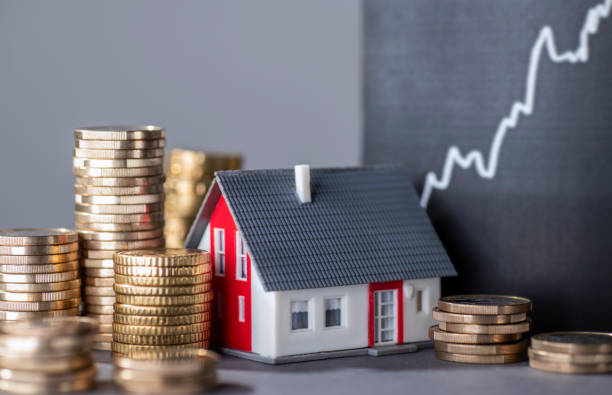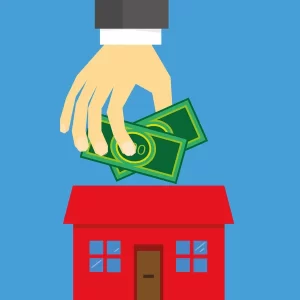If you’re considering buying a home, you need to understand how housing prices and interest rates are connected. Interest rates can impact the overall cost of purchasing a home, while housing prices are determined by factors like local economy, availability of land, and housing demand. It’s important to understand the relationship between these two things in order to make an informed decision about your purchase. In this blog post, we’ll look at the basics of housing prices and interest rates, so you can make the best possible decisions when it comes to buying a home.
The Relationship Between Housing Prices and Interest Rates
If you’re thinking about buying a home, it’s crucial to understand the connection between housing prices and interest rates. The relationship between these two factors can significantly impact your overall costs and affordability.
When interest rates are low, it generally means that borrowing money is cheaper. This can lead to increased demand for housing, which, in turn, drives up housing prices. On the other hand, when interest rates are high, borrowing money becomes more expensive, resulting in decreased demand and potentially lower housing prices.
It’s important to note that while interest rates play a significant role in housing prices, they are not the only factor. Local economy, availability of land, and housing demand also contribute to the fluctuations in housing prices.
By understanding the relationship between housing prices and interest rates, you can make informed decisions about when to buy or sell a home and ensure you are maximizing your investment.
The Impact of Interest Rates on Home Affordability
When it comes to buying a home, one of the most crucial factors to consider is interest rates and their impact on affordability. Interest rates play a significant role in determining the overall cost of your mortgage, and therefore, the affordability of your dream home.
Low interest rates can make borrowing money cheaper, allowing you to secure a lower monthly mortgage payment. This, in turn, can make homeownership more accessible and affordable for many buyers. On the other hand, high interest rates can increase the cost of borrowing, making it more challenging to afford a home or potentially forcing you to settle for a smaller or less expensive property.
Understanding the impact of interest rates on home affordability is essential for making informed decisions about when to buy. By monitoring interest rates and acting when they are at a favorable level, you can ensure that you are getting the most value for your investment and maximizing your buying power.
The Effects of Rising Interest Rates on Housing Demand
Rising interest rates can have a significant impact on housing demand. When interest rates increase, it becomes more expensive for buyers to borrow money, resulting in decreased affordability. This can lead to a decrease in housing demand as potential buyers are deterred by higher monthly mortgage payments.
Additionally, rising interest rates can also affect the overall availability of credit in the market. Lenders may tighten their lending standards, making it more challenging for individuals to qualify for loans. This can further contribute to a decrease in housing demand.
The effects of rising interest rates on housing demand are not limited to just homebuyers. It can also impact the rental market. As housing becomes less affordable, more individuals may opt to rent rather than buy, driving up demand for rental properties.
Overall, rising interest rates can have a cooling effect on housing demand. It’s important for both buyers and sellers to consider the potential impact of interest rate changes when making decisions in the real estate market.
The Role of the Economy in Housing Price Fluctuations
Over the years, there have been several noteworthy historical trends in housing prices and interest rates. These trends can provide valuable insights into the real estate market and help buyers and sellers make informed decisions.
One significant trend is the inverse relationship between housing prices and interest rates. Historically, when interest rates are low, housing prices tend to increase. This is because low interest rates make borrowing money more affordable, leading to increased demand for homes. Conversely, when interest rates are high, housing prices tend to decrease as borrowing becomes more expensive, reducing demand.
Another trend to consider is the impact of economic conditions on housing prices and interest rates. During times of economic growth, housing prices tend to rise due to increased demand and higher incomes. Conversely, during economic downturns, housing prices may decline as demand weakens and incomes stagnate.
Strategies for Buyers and Sellers in Different Interest Rate Environments
Navigating the real estate market in different interest rate environments can be a challenge, but with the right strategies, buyers and sellers can make the most of the situation.
For buyers, it’s important to take advantage of low interest rates. When rates are low, borrowing becomes more affordable, which means you may be able to secure a larger loan or purchase a higher-priced property. Consider getting pre-approved for a mortgage to lock in a low rate and be prepared to act quickly when you find the right property.
Sellers, on the other hand, may need to be more flexible in a high interest rate environment. Higher rates can reduce buyer demand, so pricing your home competitively and showcasing its value will be crucial. Consider staging your home to make it more appealing to buyers, and be prepared to negotiate on price to attract potential buyers.
Overall, in different interest rate environments, staying informed, being proactive, and working with a knowledgeable real estate agent can help both buyers and sellers make smart decisions and achieve their goals.





